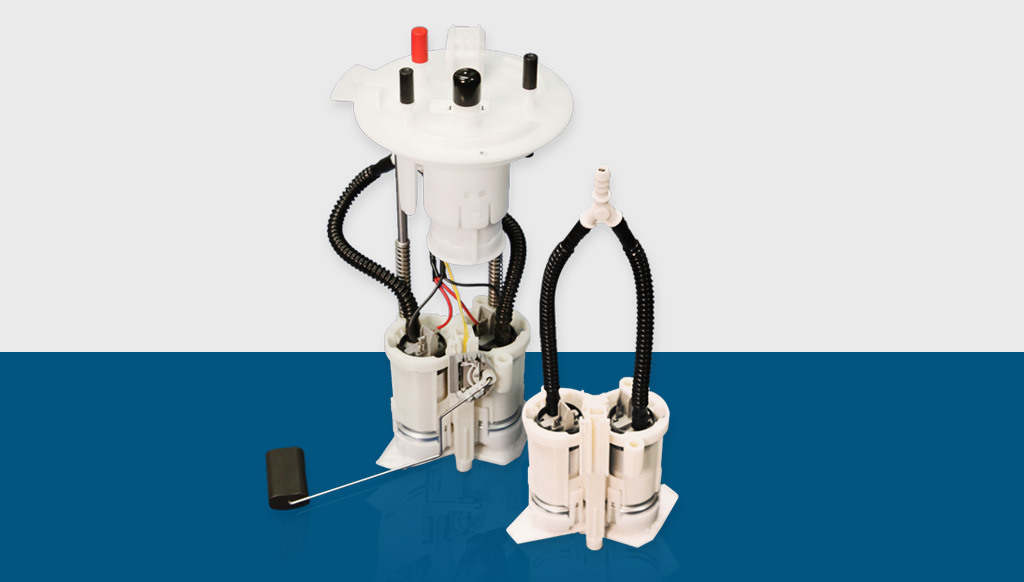Dual Fuel Pumps When You Need Superior Performance
In extreme driving conditions, multiple fuel pumps are often better than one. High horsepower applications often demand a higher volume of fuel and/or pressure and using two fuel pumps ensures the engine is always supplied with enough fuel at the correct pressure. Installing dual pumps is a straightforward process that provides multiple benefits.
A key reason race teams often go with two pumps is the backup or redundancy factor. If one fuel pump should fail or get damaged, the second pump can keep the vehicle on the race track. This is especially true in endurance racing where the car or truck may run at nearly full throttle for up to 24 hours at a time. The two main dual fuel pump designs are 1) series and 2) parallel. A series design places two fuel pumps inline in a common fuel line.
A parallel system has pumps working in two separate fuel lines that commonly merge farther up the fuel system at a ‘Y’ connection. If it is set up properly, a series dual fuel pump system can deliver higher pressure, while a parallel system may provide a higher volume of fuel.
Some race teams will install a fuel pump pickup and a dedicated fuel pump on each side of a fuel tank or fuel cell. This way, if the tank/fuel cell is running low on fuel and encounters high corner lateral g-loads and fuel sloshing/shifting takes place, there will still be a constant supply of fuel to the engine.
Most racing fuel tanks have internal baffles or fuel cells that can contain a special foam material inside them to minimize fuel sloshing/shifting, but even with this feature, sloshing/shifting can still be a problem.
In parallel pump applications, a check valve is generally installed after each pump so that the fuel can only flow out of the pump toward the engine and cannot flow back toward the tank. The two fuel lines join together at a “Y” with both pumping fuel at the same time in most instances.
Many dual fuel pump applications are inline high volume pumps. However, you can also run a combination of an in-tank pump and an inline pump. Pushing the fuel to the engine out of the tank is much more efficient than drawing it out from an inline pump outside the tank. The in-tank pump simply doesn’t need to work as hard. Multiple fuel pumps aren’t just for racing, some factory high performance cars utilize two or more fuel pumps. In fact, one Porsche model has four fuel pumps. Another more common application for dual fuel pumps in a factory vehicle is if the vehicle has two fuel tanks, as is common in some truck designs.
The decision to upgrade a high-performance or race vehicle to multiple fuel pumps is driven by performance and contingency needs. In addition to improving performance, with two pumps you always have a backup should one get damaged, overheated, or fail. Either one is reason enough to consider a dual fuel pump system for performance applications.
ABOUT TI AUTOMOTIVE
Fluid thinking™ shapes the mindset of TI Automotive. Global automotive manufacturers turn to TI Automotive to develop and produce industry leading automotive fluid systems technology. Two-thirds of the world’s vehicles contain technology from TI Automotive. With 28,000 employees at more than 118 locations in 28 countries, our strength lies in our ability to creatively meet and exceed the increasing fuel economy and emissions regulations of tomorrow’s auto industry.
